Overlanding Scotland Part 3: Hiking the Old Man and Sleeping with the Sheep
My last full day in Scotland starts with a mad dash to hike Skye's most popular trail and ends with another dreary night in a remote camp.
This is Part 3 of a 3-part article series on Overlanding Scotland.
Click here to read Part 1 and Part 2.
I had a rough night camping on the shores of Lock Slapin. High winds rattled and shook the tent for hours. The noise and commotion made it hard to fall asleep, but my mind gave in at some point.
Fortunately, the winds had died down by dawn, and I unzipped my tent to find what looked like a decent morning. It was gloomy and misty, but at least it wasn’t raining.
I threw my gear in the back of the Defender, packed up my tent, and got back on the road.
Race to the Old Man
Most of my adventures involve a mad dash of racing to be somewhere. I never sleep much or stay in one place very long, and I’m in constant motion. Whether by bus, train, foot, taxi, or vehicle, I’m often in a rush to get to the next destination to make the most of my time.
As a self-employed writer, I can work from anywhere. In theory, I could travel indefinitely if I have a laptop, internet signal, and a few hours a day to get in some work. But I also have a family and can’t leave them for long. As a result, I must use my time wisely. My adventuring and digital nomading typically happen in occasional short bursts, usually a week or so every couple of months.
I wouldn’t give this up for anything because I’ve already taken more adventures in 47 years than most people will in two lifetimes.
But the tradeoff of my part-time vagabonding is that I’m always in a rush.
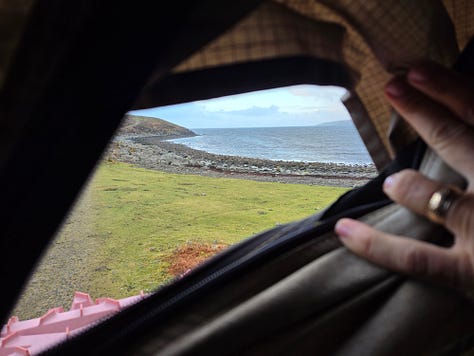

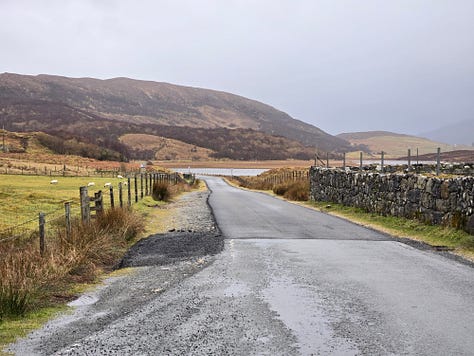
It was a beautiful drive back up to the main highway. I stopped at a small cemetery, just long enough to jog around the place, read a few names on the headstones, and take some photos. Once I hit A87, Skye’s only real road, I headed Northeast and hugged the shores of Loch na Cairidh.
I made a quick stop at the Eas a' Bhradain waterfalls. What looked like a small waterfall from the road was big now that the snow was melting in the mountains. I tried to make it to the falls, but the soggy ground made it impossible without getting my shoes wet. I tiptoed and bounced from rock to rock until the water reached the lip of my soles. As I was traveling with only one pair of shoes, I couldn’t risk getting them waterlogged for the rest of the day.
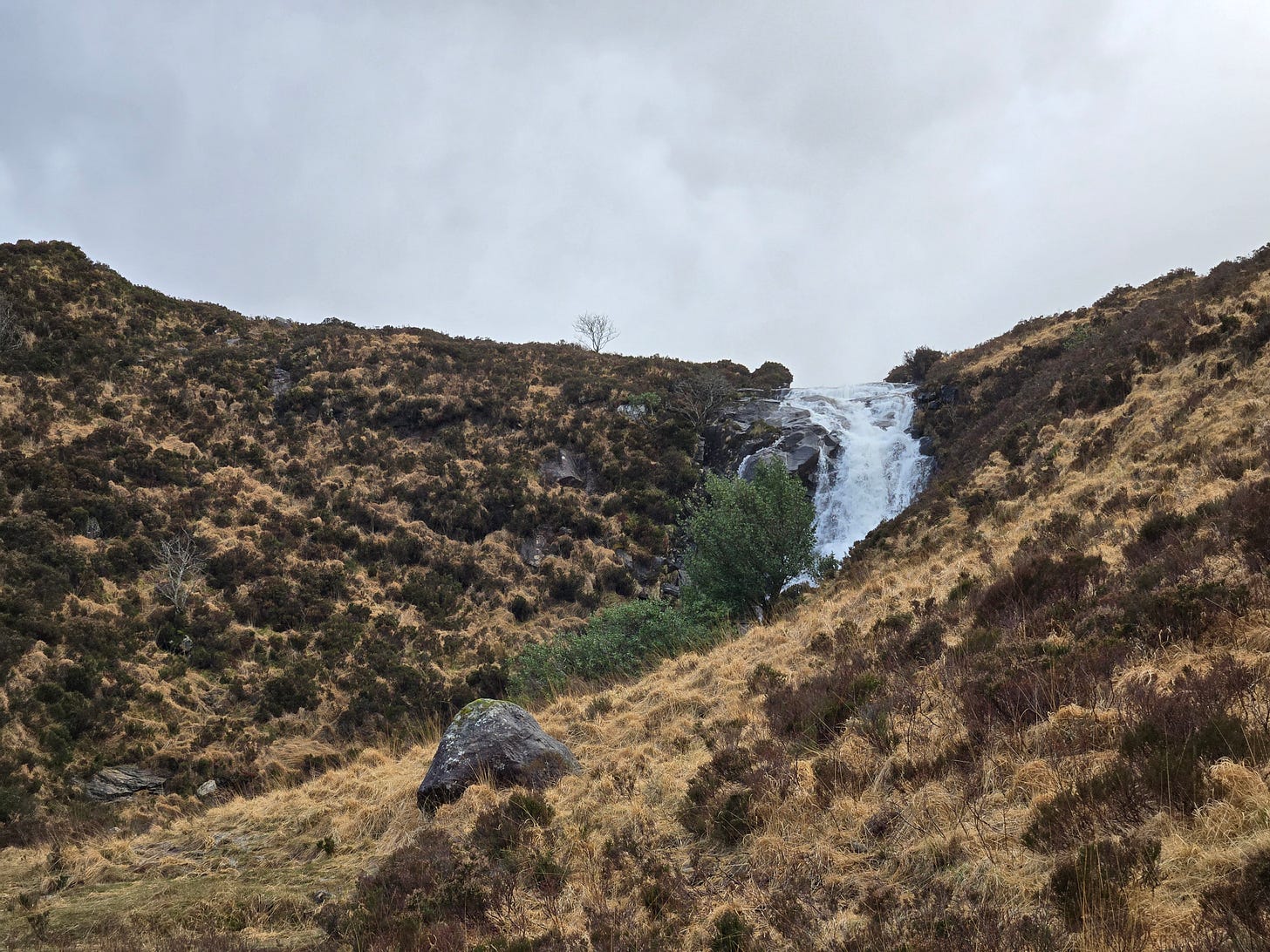
In Sligachan, I walked across the historic Sligachan bridge, built between 1810 and 1818. Few people were around, and even the famed Sligachan Hotel wasn’t yet open for the season. I quickly passed through Portree, the largest town on Skye, which had only a population of 1,000 people, and just enough time to take a 10-minute stroll and quickly scarf down some fish and chips.
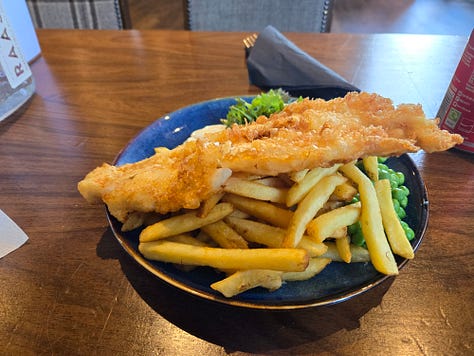
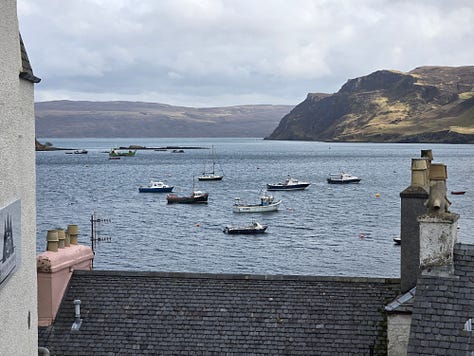
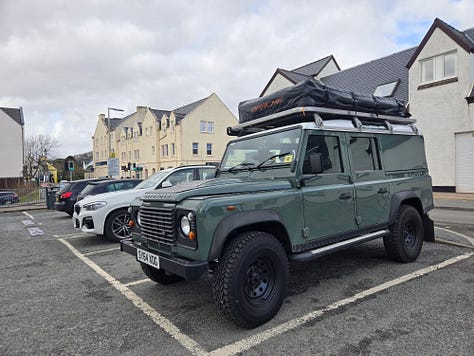
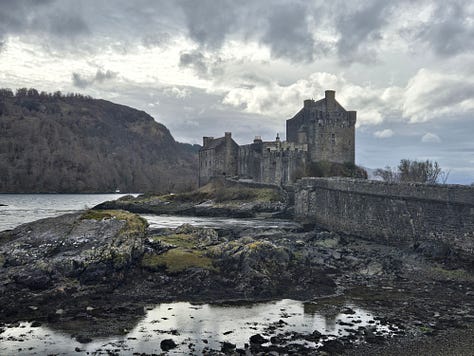
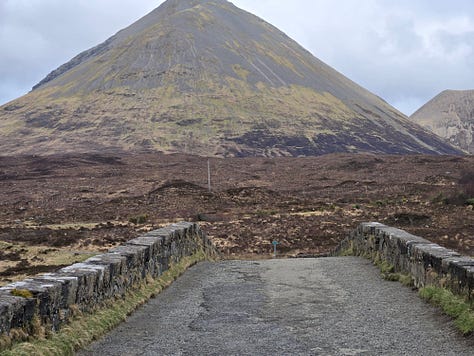
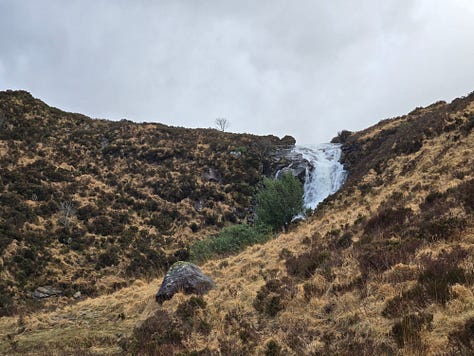
Further up the road in Skye, I neared the shores of Bearreraig Bay, offering views to the northern tip of the Isle of Rassay. Scotland is home to 900 islands, with only about 100 islands permanently inhabited. Most travelers only scratch a tiny portion of what the country offers.
If you truly want to experience Scotland’s natural majesty, you have to go out on foot. I originally wanted to do more hiking on this trip, but my lack of planning, delays, and whatever-happens-happens style of travel didn’t leave much time. At least I’d be able to hike the Old Man of Stor. The Old Man (Bodach an Stòr in Gaelic) is a 55-meter-tall rock pinnacle and the former remnants of a 2,800 million-year-old volcanic plug. It’s one of Skye's most notable natural features and can be seen from many parts of the island. I could see the tip of it a few miles ahead, towering over the landscape.
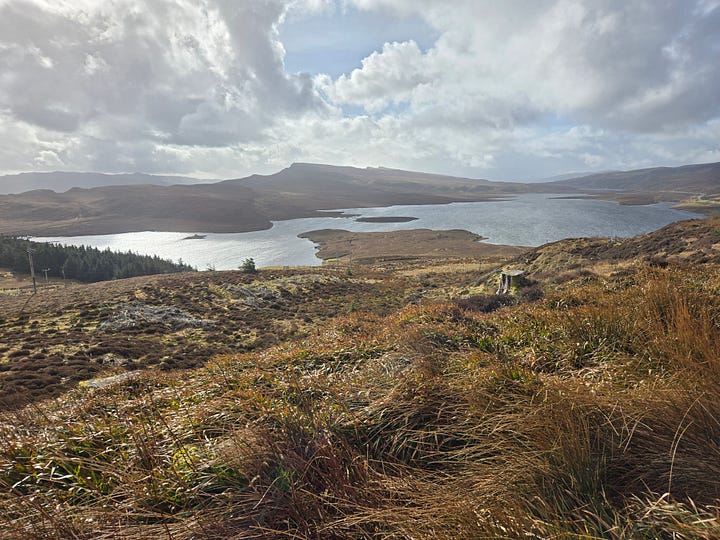
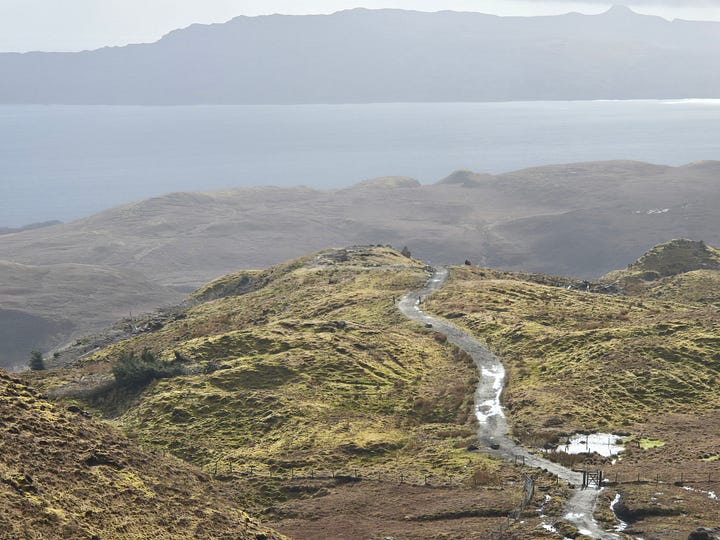
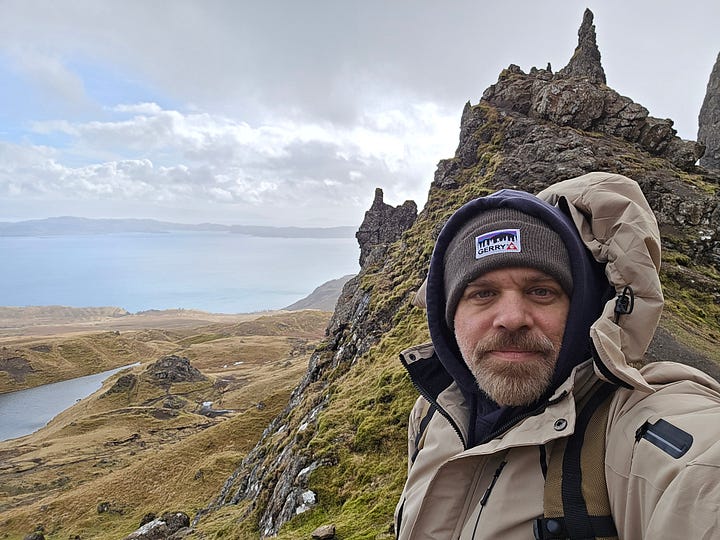
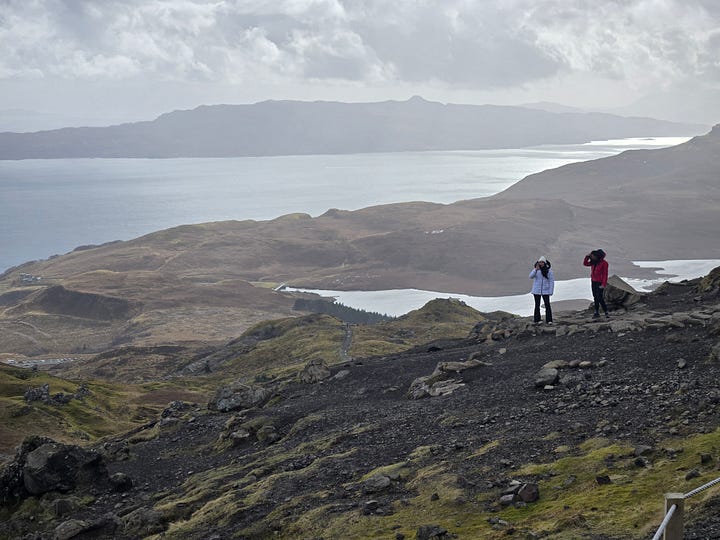
As a four-mile round trip with 1,000 feet of elevation gain, the Old Man of Stor trail isn’t the most difficult or epic. But it’s one of the most popular hikes in Skye and offers a good mix of what the island has to offer.
One local legend says Stor resembles an old man’s face, while another says it is the thumb of a giant buried in the hills below. I followed the main trail through the rock and moss-covered landscape to view the formations and loch in the distance.
Search for the Last Camp
It was my last night, and I had to have the truck back in Peebles by noon. I scanned the GPS waypoints for a spot in a hallway between Sky and Edinburgh that would allow me a shorter drive in the morning. About ten miles off the main road near Roybridge, I found a marker with a note saying it was a “remote site near a field.”
Roybridge is a small village near the confluence of the River Roy and River Spegan. There’s not much but a few buildings. It’s so tiny that if you blink while driving by on the highway, there’s a good chance you’ll miss it. There’s not much on the web about it other than that Mary MacKillop, Australia’s only recognized saint, lived in Roybridge before emigrating there.
I pulled off of A86 onto Braeroy Road and drove down the town’s only block, passing a half dozen houses before it turned into a single-track road. Scotland is full of these narrow paths. Once you get off the highway, the roads are just wide enough for one vehicle, and there’s little room for passing. When you come across a car, someone must backtrack to find a spot to pull over.
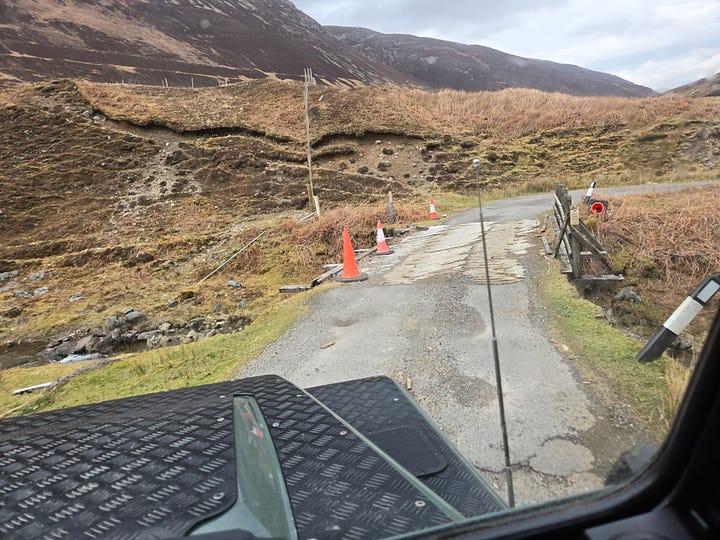
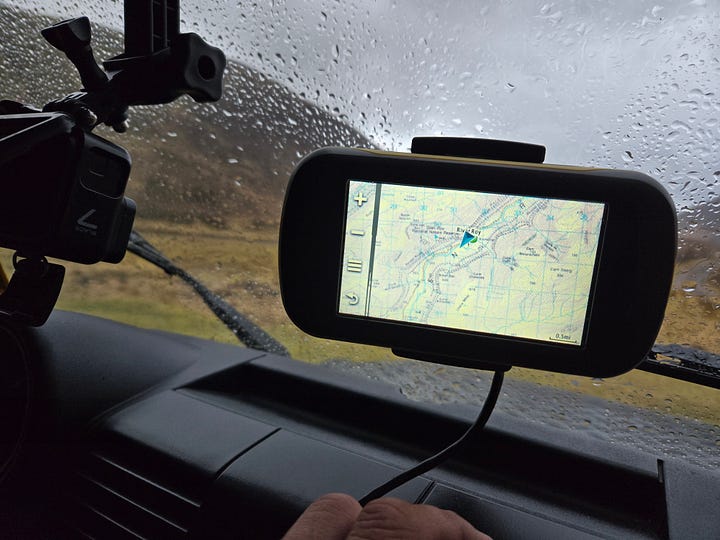
Blind corners are everywhere on Scotland’s country roads, but fortunately, there also aren’t many people out there. However, that same lack of cars can also lull you into complacency. You might roll through fifteen blind corners in a half hour without seeing another vehicle. Then, just when you believe there’s no other human for 100 miles, someone comes whipping around the next bend, and you nearly end up in a head-on collision.
The road snaked down and around some tight corners, over creeks, and through a forest before opening up in a grazing pasture. Beyond that, it climbed higher into treeless highlands, where the only things visible for miles were moss-covered grounds, rock, and snow-capped mountains.
Somewhere out there was my camp for the night.
Finding Freedom on the Back Roads
Many people are put off by backcountry roads, but I feel exhilaration every time I leave a main highway.
Scotland’s country roads are paved, but they’re quite potholed and in shitty condition. The offroader in me wanted a bit more of a challenge. At least on the roads I encountered on my route, there was little chance of getting stuck and few obstacles that would require locking the diff or testing my skills. Yet while these roads weren’t the rugged 4x4 trails of the U.S. southwest, they were no less adventurous.
Besides, I was barely even scratching the surface. Scotland has plenty of notable road trips, one of the most notable being the North Coast 500. Also known as the NC500, the 516-mile route starts and ends at the Inverness Castle and skirts the north coast of Scotland. Other routes around the country lead to remote areas where one can drive for hours and barely see another person.
Part of the thrill of backcountry roads is not knowing exactly what’s down there. There are fewer people on them, and they take you to places where many are unwilling to go. Generally, the fainter the line on the map, the more remote the road.
I’ve traveled many backcountry roads in the Southwest, and they year before I cam eot Scotland, I traveled the River Road in Big Bend National Park, West Texas. It took me four hours to travel 51 miles of dirt desert road, and I never saw anyone other than a lone Border Patrol agent.
When you leave the pavement and head to places like this, you also temporarily leave behind a lot of the bullshit in life. Whereas most of modern life has us pressed for time and racing to the future, backcountry roads slow us down and take us to the past. Backcountry roads take you away from phone reception, the internet, schedules, jobs, social media, and modern problems. There are no lines on the road, signs, traffic, or expectations. And when you’re all alone, there are no rules either. You can stop in the middle of the road and cut the engine if you want.
Some people see danger in being along on a remote roads.
I feel an exhilarating sense of freedom.
Sleeping with the Sheep
I continued down Braeroy Road for several miles, going around blind corners, up hills, down hills, and across rickety bridges.
I saw nothing but rocks and sheep until I came across a lonely van lifer perched high on a hill in the Glen Roy National Nature Reserve. He sat in a chair outside of his van, drinking a cup of warm tea in the mist. Turning his line of sight from the mountain tops to my direction, he quickly waved and then went back to staring at the mountains. Perhaps he was seeking the same solitary experience I was and may have been slightly annoyed at my presence.
I let him be and drove over the peak and down the backside of the mountain, continuing for another few miles until I neared the marker on the GPS.
A small outcrop near the GPS coordinates was just big enough for one vehicle. I maneuvered the Defender in the pull-off and leveled out the vehicle with some rocks and my recovery boards.
As I was about to pull out the tent and prep my site for the evening, a group of curious sheep climbed over the hill and slowly moved closer. Unlike other sheep I had encountered, these acted differently. They weren’t scared. They looked serious, and when I made eye contact with one of them, he locked his vision on me and slowly moved closer.
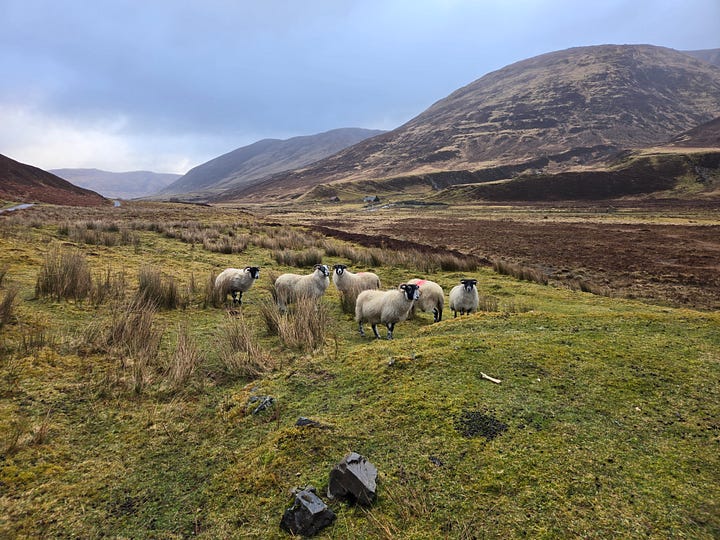
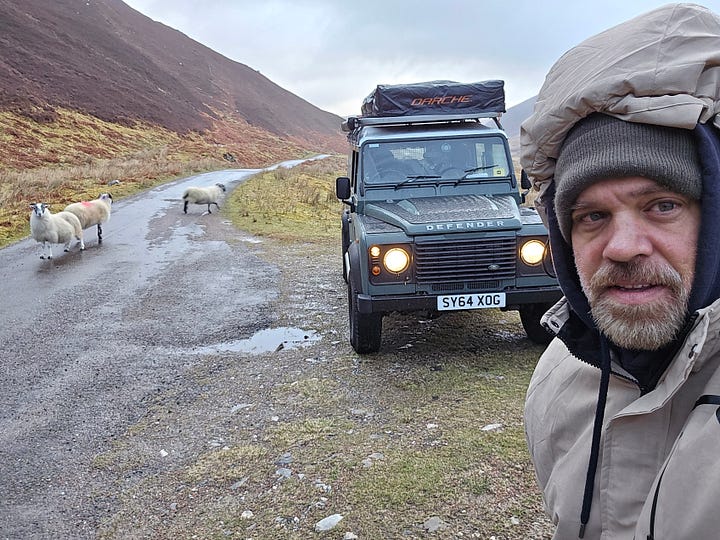
I didn’t know if sheep attack humans. At the very least, they could ram me, I thought. They continued to inch closer until I stomped my foot and yelled. And within a split second, they ran off in the distance and lost all their courage.
Just like clockwork, the winds started to kick up near sunset, but this seemed even stronger than the previous nights. I could hear gusts rolling over the top of the mountain, down the valley, and heading straight for me. Each passing wave of wind sent a huge gust that rattled the truck and the tent. The zippers clanked, and the fabric of the tent fluffed, making a perfectly-timed symphony of swooshing and ticking.
What had been a bearable mist started to turn into rain. Once again, I zipped up my rain gear and took refuge under the tent's ledge.
The conditions ruled out the idea of making a decent meal. Even if I were to keep the stove lit, I wasn’t up for pulling out a table and standing in the rain for 30 minutes to prep food I likely wouldn’t be able to enjoy anyway. So, I settled for Plan B: quickly heat up a couple of cans of new potatoes, then eat them in the shelter of the truck.
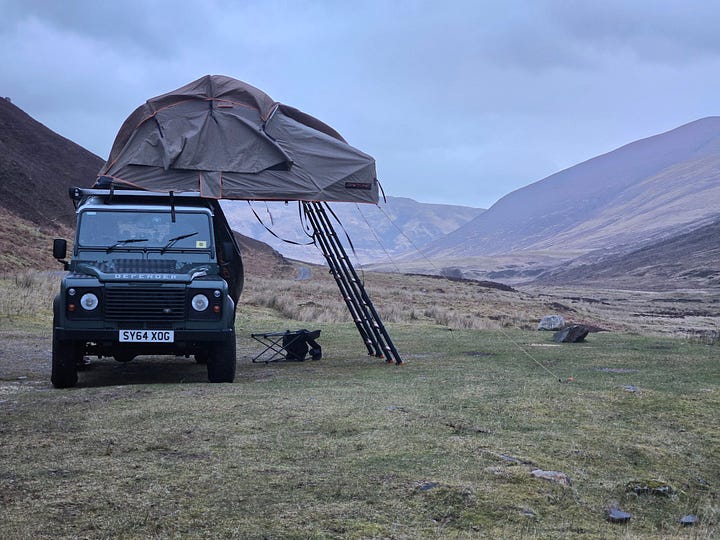

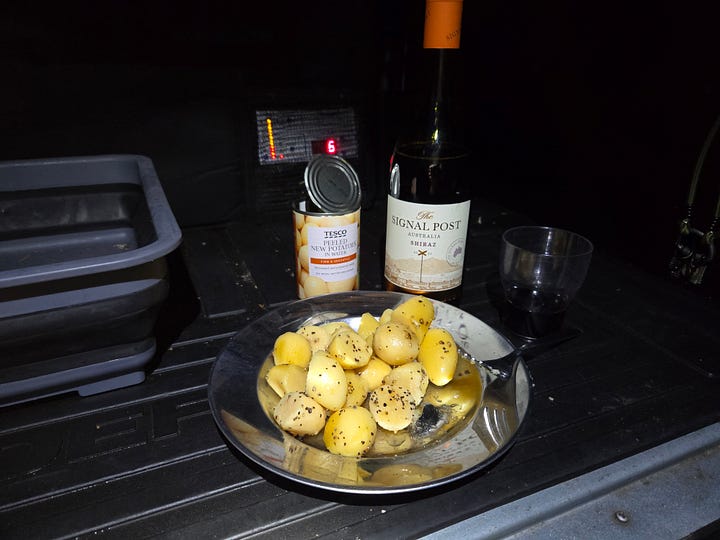
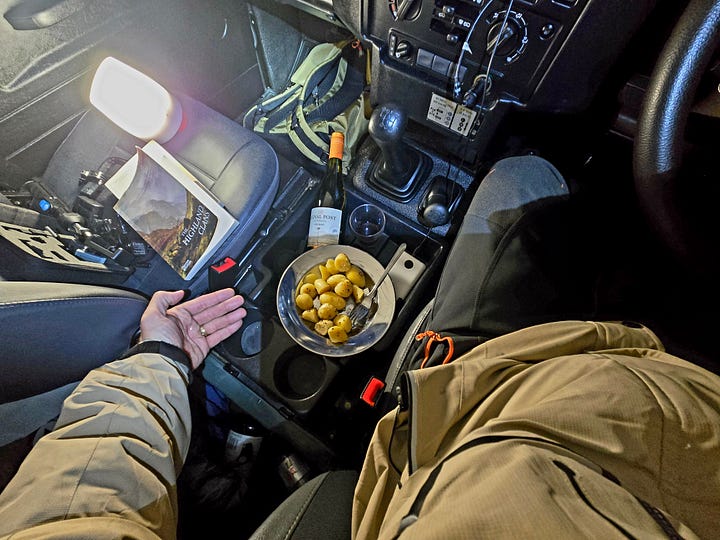
Scotland’s weather had once again reared its ugly head. While the weather was never truly horrible, it was always just bad enough to make evening campsite relaxation uncomfortable. Even before my trip, a Scottish-born client of mine advised me to “Just stay in Airbnbs.” “It’s quite shitty and nasty for camping that time of year,” he said.
I took shelter in the front seat of the Defender, ate my canned potatoes, and drank another bottle of wine that Liam had given me in Glencoe. There was little to do but to read and write in my journal, which truthfully, is a part of the reason I enjoy camping so much.
After so many travels and so many adventures, it’s often the little and simple experiences like this that are the most memorable.

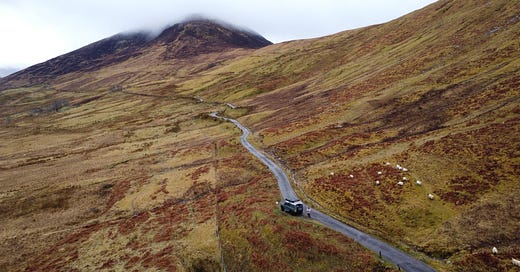



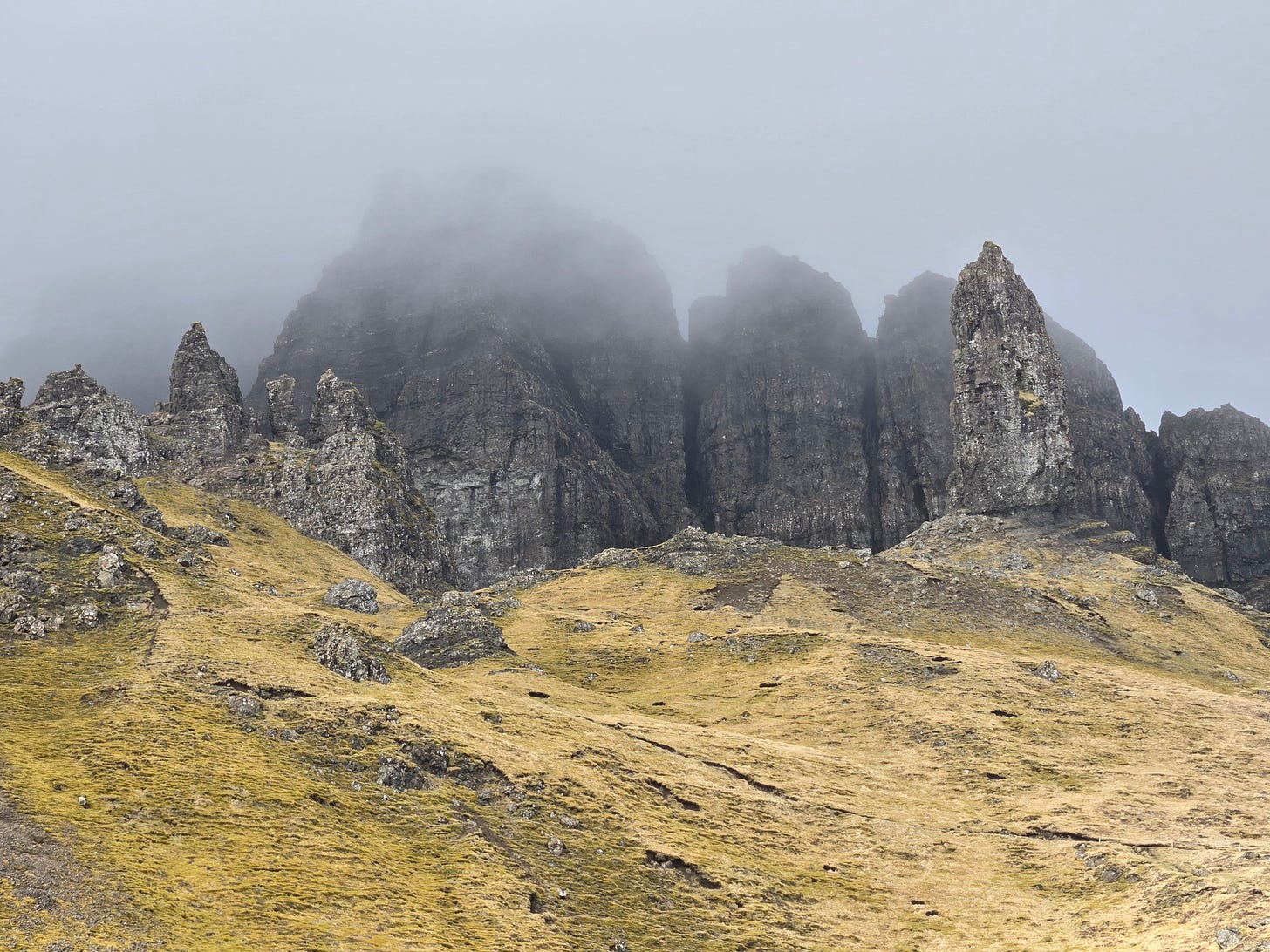

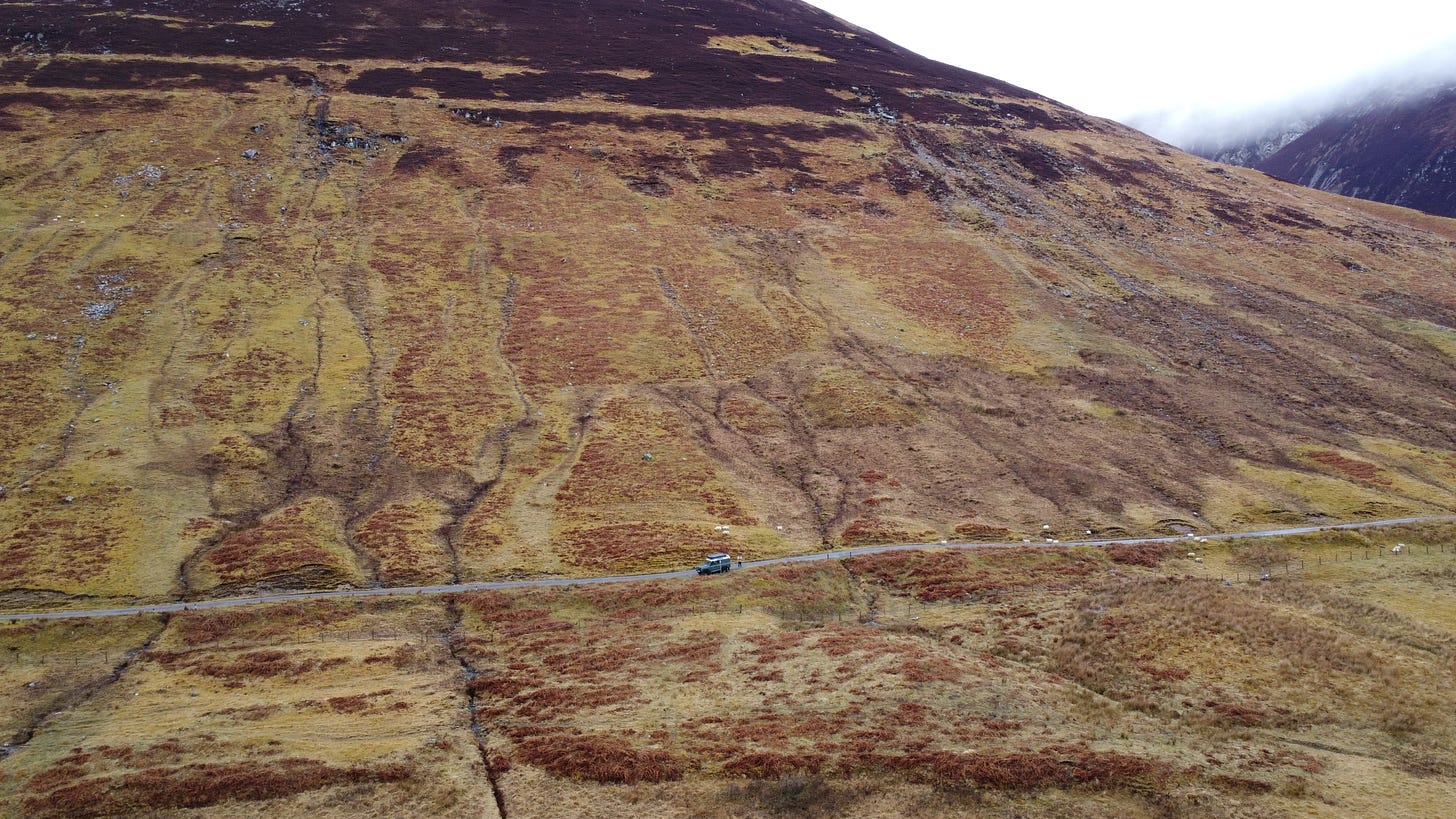
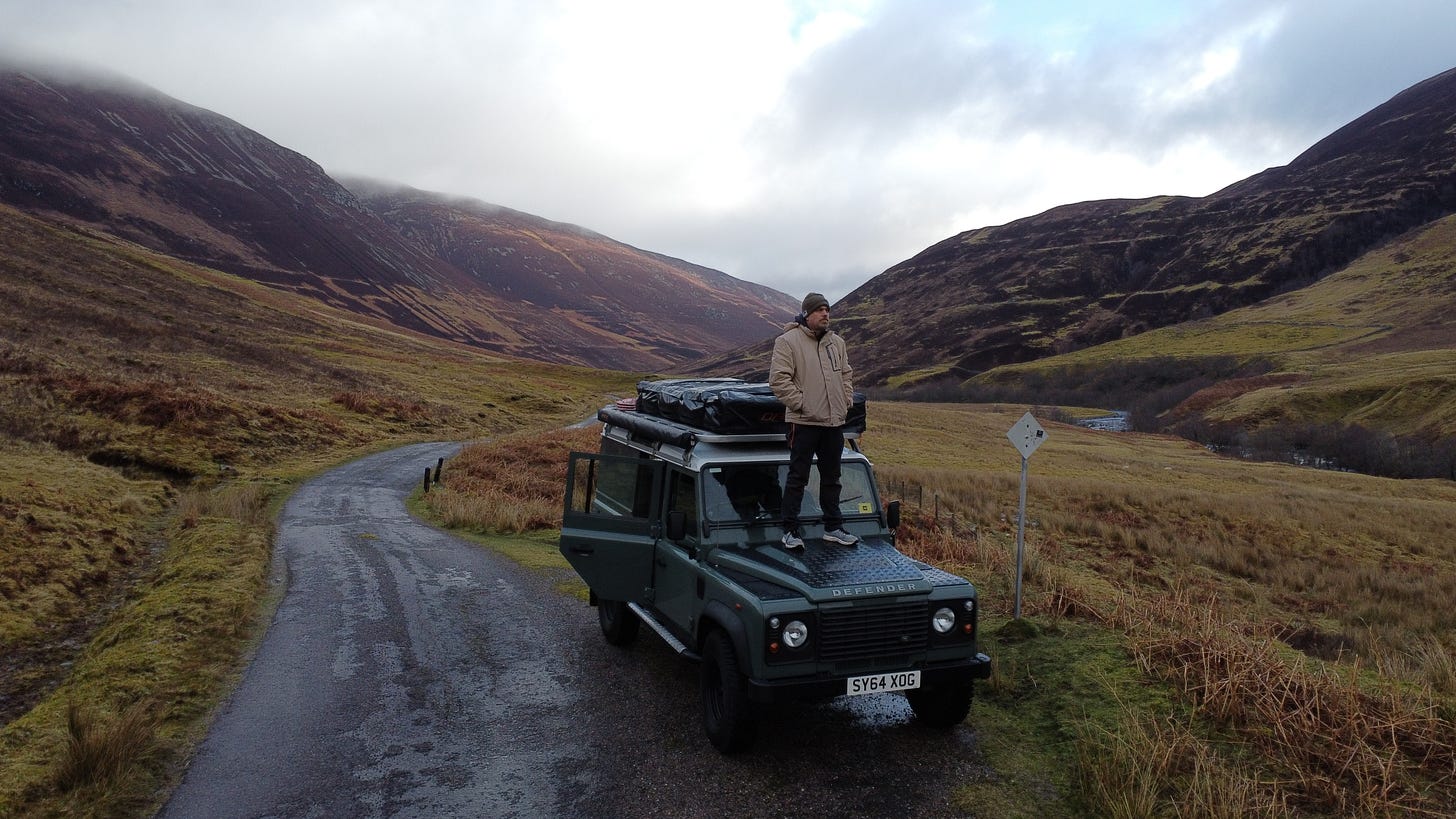
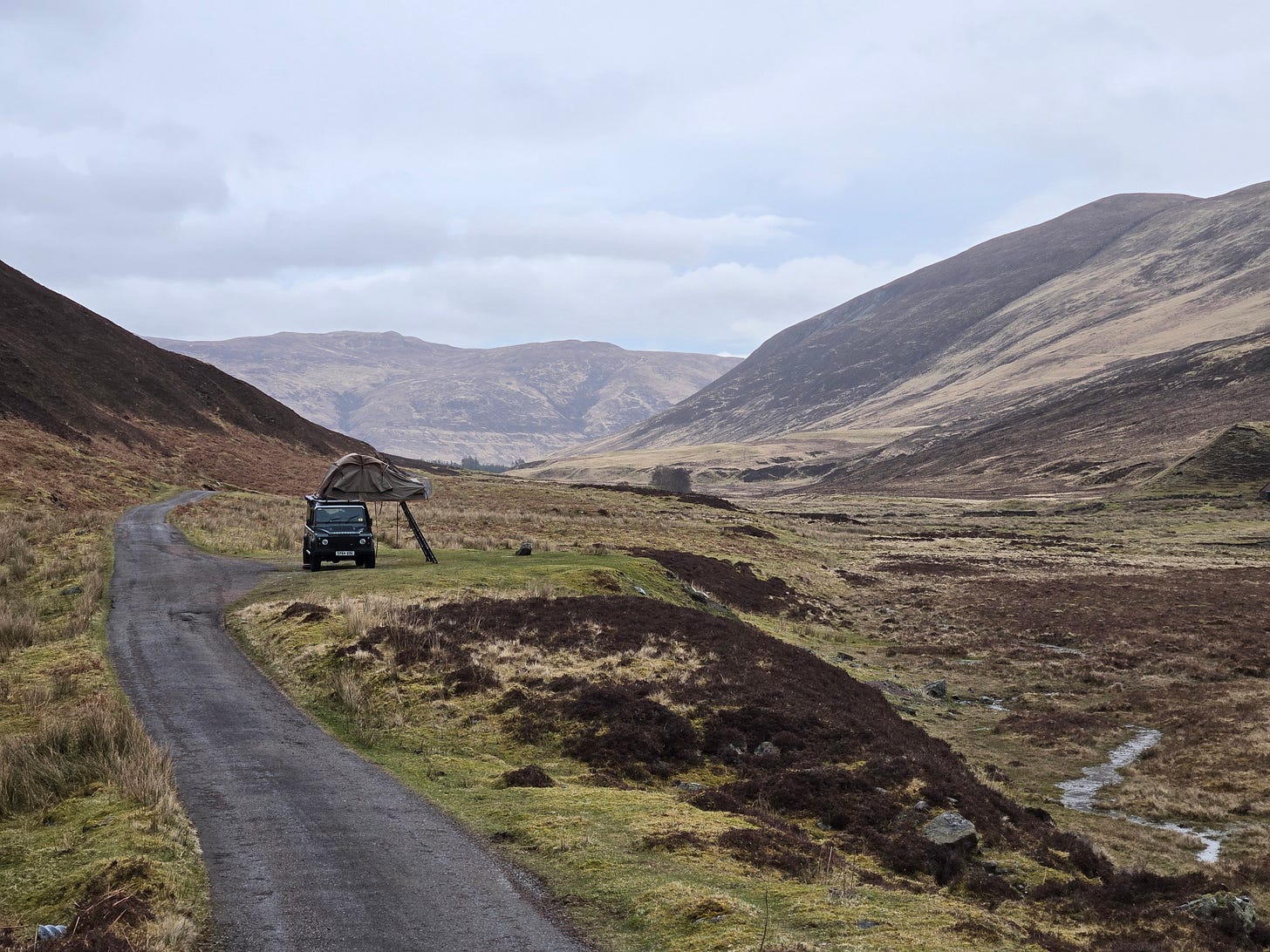
Backroad traveling is the way to go! This was a fun read, thanks for sharing Craig. This motivates me to travel to Scotland.